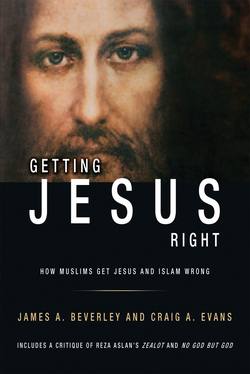Читать книгу Getting Jesus Right: How Muslims Get Jesus and Islam Wrong - James A Beverley - Страница 15
На сайте Литреса книга снята с продажи.
Are the NT Manuscripts Reliable?
ОглавлениеEven if one concludes that the New Testament Gospels, written in the first century and written in times when many of Jesus’ original followers and eyewitnesses were still living, accurately recorded the things that Jesus said and did, one may still wonder if the later copies of these copies were faithful to the originals. This question can be answered if we have enough manuscripts, from different times and places, and at least a reasonable sample written within a century or two of the time when the original Gospel manuscripts were written and had begun to circulate. Of course, there is a bit more to it than that, but for our purposes it should be sufficient.
When Erasmus of Rotterdam (1466–1536) produced the first critical edition of the Greek New Testament in 1516, he had at his disposal only seven manuscripts, not one complete, and none older than the twelfth century.1 As he published new editions over the next 20 years he acquired several more manuscripts. His work of comparison and collation laid the groundwork for the discipline now known as textual criticism.
Today we have approximately 5,800 Greek New Testament manuscripts, representing some 2.6 million pages of text. Most of these manuscripts are medieval, but several are much older. We now have Codex Vaticanus, which dates to AD 330–340 and preserves most of the Old Testament (in Greek) and the New Testament. We have Codex Sinaiticus (housed in the British Museum), which dates to the same period and also preserves most of the two Testaments (though several pages at the beginning of this codex are lost). Scholars suspect that Vaticanus and Sinaiticus are two of the fifty copies of Scripture that Emperor Constantine (AD 272–337) commissioned. We also have Codex Alexandrinus, Codex Beza and Codex Ephraemi Rescriptus, all of which date to the fifth century. We also have several more fifth- and sixth-century codices, often containing only parts of the New Testament. One of these is the very significant Codex Washington, which contains the four Gospels.
We also have a number of papyri, many of which are older, sometimes much older, than the codices that have been mentioned. The oldest of these ranges in date from the late second century to the late third century. They provide us with most of the text of the Gospels and virtually all of the text of Paul’s letters, as well as fragments, sometimes large fragments, of the other New Testament writings. To date we have some 127 Greek New Testament papyri. More will be said about these papyri.
We have many “miniscules”—manuscripts written in smaller, longhand style. Most of these date to the ninth century or later. Among them, manuscript 33, known as the “queen of the miniscules,” is a gem, for it is carefully copied and based on old text of good quality.
We also have approximately 10,000 Latin translations of the New Testament. Again, most of these date to the medieval period, but some are earlier. We also have several thousand lectionaries, in Greek and in Latin, in which passages of Scripture are quoted. We also have countless tens of thousands of quotations of Scripture in the writings of the Church Fathers. From these alone we could reconstruct almost the entire New Testament. We also have thousands of manuscripts in Coptic, Ethiopic, Syriac and other languages from the Byzantine and Medieval periods.2
The value of this vast inventory of manuscripts is that scholars are able to compare the readings, so that in cases where there are variant readings or obvious mistakes in the text, it is possible to determine what the original reading was. Although there is some disagreement, textual critics believe that the text of the New Testament was quite stable in its first two centuries (for which, admittedly, we have only small samples of evidence) and that we have restored the text to within 98 percent or 99 percent of the original.3
There simply are no legitimate grounds for thinking that we do not know how the original manuscripts read. There are no grounds for thinking that the Jesus of the New Testament Gospels that we have today is different from the Jesus of the New Testament Gospels when they were first written and circulated in the first century.
